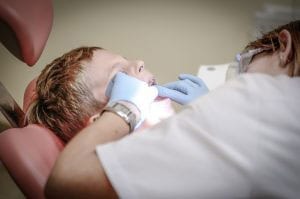Welcome to the Rare Classroom, a new series from Patient Worthy. Rare Classroom is designed for the curious reader who wants to get informed on some of the rarest, most mysterious diseases and conditions. There are thousands of rare diseases out there, but only a very small number of them have viable treatments and regularly make the news. This series is an opportunity to learn the basics about some of the diseases that almost no one hears much about or that we otherwise haven’t been able to report on very often.
Eyes front and ears open. Class is now in session.

The disease that we will be learning about today is:
Pemphigus Vulgaris
What is Pemphigus Vulgaris?
- Pemphigus Vulgaris is an ‘autoimmune’ disease.
- The antibodies that attack parts of our own body are called ‘autoantibodies’.
- The autoantibodies target proteins called desmogleins, which are present on the cells in the outer layer of the skin (the epidermis).
- Desmogleins act as a glue to stick these cells together.
- When the autoantibodies formed in Pemphigus Vulgaris have combined with the desmogleins, the cells in the skin and mucous membranes no longer stick together properly and fall apart.
- This causes the blisters and erosions that are typical of Pemphigus Vulgaris.
- Causes severe blistering of the skin and of the mucous membranes lining the mouth, nose, throat and genitals.
- Pemphigus Vulgaris does not go away by itself, and always needs treatment by a specialist.
- Affects around 3 cases per 100,000 population
- In the pre-corticosteroid era, PV was generally fatal.
- Patients have autoantibodies against desmogleins, which disrupt the connections between the squamous cells of the epidermis and cause very superficial, intraepidermal, fragile bullae.
How Do You Get It?
- Pemphigus Vulgaris affects both sexes equally. It can start at any age but is most common in middle-aged adults.
- It affects people of all races but is more common in some than others, for example in people of Jewish origin.
- PV is not passed from generation to generation. However, genetic factors are thought to be important in combination with other factors.
- Pemphigus Vulgaris is not an infection: it cannot be caught or passed on to anyone else.
What Are The Symptoms?
- In most patients, the blisters and erosions start first in the mouth, and appear later on the skin. In a few, the skin is affected first. Most patients get erosions in their mouth at some time; but some never get blisters or erosions on their skin.
- The skin lesions start as thin-walled blisters (collections of clear fluid within the skin), arising on a background of normal-looking skin. Because they are so fragile, pemphigus blisters break very easily, leaving raw areas known as erosions.
- Erosions are areas of skin (or mucous membrane), which lack its top (outer) layer. They look raw and feel sore – like a burn. Erosions can join together to create larger areas of raw skin that look as if the top layer has been scraped off.
- Erosions can become crusty and scabbed. When they heal, those on the skin may leave discolored marks.
- Intact blisters are seldom seen in the mouth in pemphigus vulgaris because they get broken so easily. Erosions are seen there instead. There may be just one or two, or several that can join together.
How Is It Treated?
- Corticosteroids
- For people with mild disease, corticosteroid cream may be enough to control it. For others, the mainstay of treatment is corticosteroids, such as prednisone pills.
- Immunosuppressants
- Medications such as azathioprine (Imuran) or mycophenolate mofetil (CellCept) help keep your immune system from attacking healthy tissue. They may have serious side effects, including increased risk of infection.
- Biological therapies
- Your doctor may suggest a drug called rituximab (Rituxan) if other medications aren’t helping or are difficult for you to tolerate. This drug is given as an injection. It targets the white blood cells responsible for the production of the pemphigus antibodies.
- Antibiotics, antifungals, antiviral medications
- These may be used to control or prevent infections.
- Other medications
- Other drugs that alter the immune system may be effective. These include dapsone and intravenous immunoglobulin.
Where Can I Learn More???
- Check out our cornerstone on this disease here.
- Learn more about this disease from the International Pemphigus & Pemphigoid Foundation.







